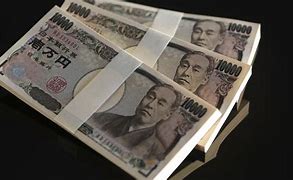The Japanese Yen (JPY) snapped recent losses on Thursday, spurred by comments from Bank of Japan (BoJ) board member Seiji Adachi on Wednesday. Adachi emphasized the gradual reduction of bond purchases to ensure that long-term yields accurately reflect market signals. Additionally, he suggested that raising interest rates could be appropriate if a weaker JPY leads to increased inflation, per Reuters
Traders have increased bets on the Bank of Japan (BoJ) implementing another interest rate hike. Investors are now turning their attention to Tokyo's inflation data scheduled for release on Friday, which is seen as a key indicator of nationwide price trends.
Hawkish remarks from Minneapolis Fed President Neel Kashkari further fueled concerns about potential rate hikes, sustaining the significant yield gap between the US and Japan. This environment continues to foster JPY carry trades, where investors leverage low-interest Japanese Yen to invest in higher-yielding US Dollar assets.
The US Dollar (USD) strengthened on account of elevated US Treasury yields, partly driven by increased risk aversion ahead of the release of US Gross Domestic Product Annualized (Q1) data on Thursday. Additionally, market participants will likely observe the Core Personal Consumption Expenditures (PCE) Price Index data scheduled for Friday, which are anticipated to offer insights into the Federal Reserve's potential stance on interest rate adjustments.
Daily Digest Market Movers: Japanese Yen gains ground due to hawkish remarks from BoJ's Adachi According to Bloomberg, Federal Reserve Bank of Atlanta President Raphael Bostic stated on Thursday that the path of inflation is expected to be uneven, and a decrease in inflation breadth would bolster confidence in the necessity of a rate cut. On Wednesday, the Fed Beige Book report covering the period from April to mid-May showed that national economic activity experienced slight growth, with mixed conditions across industries and districts. The report also indicated that employment rose slightly, wage growth was moderate, and prices increased modestly as consumers resisted further price hikes. Reuters reported that Neel Kashkari, President of the Federal Reserve Bank of Minneapolis, hinted at the possibility of a rate hike. Kashkari remarked, “I don’t believe anyone has completely ruled out the option of increasing rates,” expressing doubts about the disinflationary trend and projecting only two rate cuts. On Tuesday, the US Housing Price Index (MoM) for March was underperforming, with March's number coming in at 0.1% against 1.2% for February, where 0.5% was expected. Japan's Weighted Median Inflation Index, a significant gauge of the country’s trend inflation, increased by 1.1% in April. This growth rate represents a slowdown from the 1.3% increase recorded in March. Japan’s Corporate Service Price Index (CSPI). The index posted a year-over-year reading of 2.8% in April, surpassing expectations of 2.3% and marking its fastest rate of increase since March 2015. Japan Finance Minister Shun'ichi Suzuki on Tuesday, emphasized the importance of currencies moving in a stable manner that reflects fundamentals, stating that he is closely monitoring foreign exchange (FX) movements. However, Suzuki refrained from commenting on whether Japan has conducted currency intervention. Technical Analysis: USD/JPY drops to near 157.00 The USD/JPY pair trades around 157.10 on Thursday. The daily chart shows a symmetrical triangle, indicating a pause in the prevailing bullish trend. However, the 14-day Relative Strength Index (RSI) remains above 50, confirming a bullish bias.
The USD/JPY pair could test the upper boundary of the symmetrical triangle, followed by the psychological level of 158.00. If this level is breached, the next target could be 160.32, marking its highest point in over thirty years.
On the downside, the immediate support appears at the psychological level of 157.00, followed by the nine-day Exponential Moving Average (EMA) at 156.86. Further decline in the USD/JPY pair could apply downward pressure, potentially testing the lower boundary of the symmetrical triangle.













